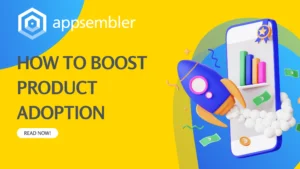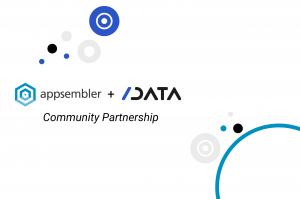Welcome to a comprehensive guide on achieving customer training excellence through 6 proven best practices. In this article we delve into the strategies that transform customers into advocated by providing effective training. From setting clear objectives to offering ongoing support, we’ll explore how to elevate customer satisfaction and business success through strategic training initiatives.
Key Takeaways:
- Clear Objectives for Success: Learn the significance of setting training objectives aligned with business goals to foster customer success.
- Tailored Training for Diverse Audiences: Discover the power of audience segmentation, needs analysis, and customized content creation.
- Engaging Training Design: Explore the principles of effective design, multimedia integration, and interactive learning activities.
- Varied Delivery Methods: Understand the impact of diverse delivery channels, blended learning, and microlearning techniques.
- Continuous Assessment and Improvement: Dive into real-time feedback mechanisms, data-driven analysis, and the iterative refinement of training programs.
Table of Contents
- Key Takeaways:
- Introduction
- Best Practice 1: Defining Objectives for Customer Training
- Best Practice 2: Tailoring Training Programs to Audience Needs
- Best Practice 3: Designing Engaging and Effective Training Materials
- Best Practice 4: Implementing Engaging Training Delivery Methods
- Best Practice 5: Continuous Assessment and Improvement
- Best Practice 6: Providing Ongoing Support and Resouces
- Leveraging Appsembler: Elevating Customer Training to New Heights
- Conclusion
- Frequently Asked Questions
In today’s dynamic business landscape, where customer expectations are continually evolving, providing exceptional products of services is just the beginning. To truly stand out and foster long-lasting customer relationships, you need to invest in their success. This is where customer training comes into play. Effective customer training doesn’t just ensure that your customers know how to use your products; it empowers them to derive maximum value, resulting in improved customer satisfaction and business success.

Introduction
Setting the Stage
In a world driven by customer-centricity, providing top-notch products or services is only part of the equation. What sets businesses apart is the ability to guide their customers toward excellence in product utilization. Customer training is the bridge that transforms users into proficient advocates. Its impact reverberates through increased customer satisfaction, reduced support overheads, and enhanced brand loyalty.
Best Practice 1: Defining Objectives for Customer Training
Understanding the Significance
Clear training objectives form the backbone of a successful customer training program. By aligning these objectives with broader business goals, companies can elevate training from a mere procedure to a strategic asset. When customers grasp how your product solves their challenges, their loyalty deepens, and your business reaps the benefits.
Best Practice 2: Tailoring Training Programs to Audience Needs
Audience Segmentation
Customers are a diverse bunch, each with unique needs, preferences, and learning styles. The art of effective training lies in recognizing and catering to these differences. By segmenting your audience based on factors like job roles, skill levels, and industry, you can tailor your training content to resonate with each group. This approach enhances engagement, as learners feel that the training is designed specifically for them.
Analyzing Needs and Skill Gaps
To create impactful training, you must first understand what your customers lack and what they yearn to learn. Skill gaps can hinder productivity and impede the realization of value from your offerings. Techniques such as surveys, feedback analysis, and direct interactions can provide invaluable insights into these gaps. Armed with this knowledge, you can develop training that fills these gaps effectively.
Creating Customized Content
People learn in diverse ways – some are visual learners, while others prefer hands-on experience. To accomodate this range of learning styles, crafting customized content is essential. Whether it’s videos, written materials, or interactive modules, a diverse array of content types ensure that learners are engaged and have the opportunity to absorb information in ways that resonate with them.
Best Practice 3: Designing Engaging and Effective Training Materials
Principles of Effective Design
In the realm of customer training, aesthetics matter. Clear, visually appealing content holds the power to captivate learners and enhance comprehension. Simplicity, clarity, an and intuitive structure should guide the design process, making sure that the training materials are not only informative but also visually engaging.
Multimedia Integration
The saying “a picture is worth a thousand words” holds true in training contexts. By incorporating multimedia elements such as videos, infographics, and interactive visuals, you can elevate the impact of your training content. These elements not only break the monotony of text but also help convey complex ideas in a simplified manner.
Interactive Learning Activities
Learning is the most effective when it’s an active process. Incorporating interactive elements like quizzes, scenario-based exercises, and hands-on activities keeps learners engaged and encourages them to apply what they’ve learned. This approach transforms passive recipients into active paticipants, fostering better retention and application of knowledge.
Best Practice 4: Implementing Engaging Training Delivery Methods
Diverse Delivery Channels
Variety is the spice of life, and the same holds true for training delivery methods. Offering a range of options, from webinars and online courses to in-person workshops, accommodates diverse preferences and availability. This approach ensures that every learner can engage your training on their own terms.
Blended Learning Approach
The world isn’t binary – It’s not just online or offline. A blended learning approach fuses the best of both worlds, combining online convenience with the interactive nature of face-to-face interactions. This approach caters to various learning styles and circumstances, ensuring a comprehensive learning experience.
Microlearning Techniques
In a fast-paced world, time is precious. Microlearning, characterized by bite-sized lessons, delivers information in manageable chunks. This approach caters to shorter attention spans and improves knowledge retention. By providing concise yet impactful content, you empower learners to absorb knowledge without feeling overwhelmed.
Best Practice 5: Continuous Assessment and Improvement
Real-Time Feedback Mechanisms
Feedback is the compass that guides your training journey. Real-time feedback mechanisms like surveys, ratings, and user comments offer valuable insights into the effectiveness of your training. They highlight areas of improvement and give learners a voice, fostering a sense of involvement in the training process.
Data-Driven Analysis
In the digital age, data is your greatest asset. Tracking learner progress and analyzing trends enable you to guage the impact of your training initiatives Identifying areas of high engagement and those needing improvement empowers you to make informed decisions and refine your training strategy.
Adapting Based on Insights
The beauty of data lies in its ability to guide change. With insights in hand, you can iteratively refine your training programs. By adapting content, delivery methods, and approached, you ensure that your training remains relevant, engaging, and aligned with evolving customer needs.
Best Practice 6: Providing Ongoing Support and Resouces
Post-Training Support
Learning doesn’t end with a training session – it’s an ongoing journey. Providing post-training support through FAQs, troubleshooting guides, and help centers ensures that learners can apply their newfound knowledge effectively. This support safety net encourages learners to explore, experiment, and grow.
Community Engagement
Fostering a sense of community enhances the learning experience. Forums, peers interactions, and user groups create spaces for learners to exchange ideas, ask questions, and learn from each other. This collaborative environment transforms learners into a network of resources, enriching the training journey.
Leveraging Appsembler: Elevating Customer Training to New Heights
Appsembler, a cutting-edge Learning Management System (LMS) and a true ally in customer training excellence, brings an array of tools that align seamlessly with the best practices outlined above. Through its advanced features and user-centric design, Appsembler empowers businesses to create tailored, engaging, and effective training experiences.
When it comes to setting clear objectives, Appsembler provides a robust framework for defining and tracking training goals that directly align with broader business objectives. Its customizable dashboards and reporting tools offer a comprehensive view of learner progress and engagement, ensuring that your training efforts remain in sync with your company’s strategic vision.
In the realm of tailored training, its intuitive interface enables you to segment your audience effectively, ensuring that each group receives content tailored to their specific needs. The platform’s adaptive learning capabilities allow you to personalize the learning journey, ensuring that each learner’s experience is uniquely engaging and relevant.
Appsembler’s commitment to effective design is evident in its multimedia integration capabilities. With support for a variety of content types, including videos, interactive assessments, and more, Appsembler lets you craft training materials that captivate and educate. The platform’s interactive learning activities feature encourages hands-on participation, fostering better comprehension and knowledge retention.
With diverse delivery channels in mind, Appsembler’s flexibility shines through. Its user-friendly interface makes both online and in-person training seamless, offering a blended learning experience that caters to varied preferences. Moreover, its microlearning capabilities enable the creation of bite-sized lessons that fit into busy schedules, enhancing engagement and retention.
In summary, Appsembler isn’t just a tool – it’s a strategic partner in achieving customer training excellence. By leveraging its features, you’re equipped to implement the best practices outlined in this guide seamlessly, elevating your training initiatives to a new level of impact and effectiveness. With Appsembler, you’re not just training your customers – you’re nurturing relationships, fostering growth, and setting the stage for unparalleled success in the realm of customer training.
Conclusion
In the world driven by innovation and competition, staying ahead requires more than just delivering quality products; it demands an exceptional customer experience. At the heart of this experience lies effective customer training. By embracing the six best practices detailed in this guide, you’re not just imparting knowledge – you’re shaping relationships, fuelling growth, and laying the groundwork for success that resonates far beyond training sessions. It’s time to embark on a journey that elevates your business, transforms your customers, and sets new standards for excellence in the realm of customer training.
Frequently Asked Questions
Customer training empowers clients to make the most of your products and services, enhancing their satisfaction. This directly translates into brand loyalty and business growth.
Personalized training resonates with individual learners, addressing their unique needs and learning styles. This customization enhances engagement and understanding, leading to higher satisfaction levels.
Multimedia, such as videos and interactive elements, makes training engaging and easily comprehensible. Visual aids simplify complex concepts, making learning more enjoyable and effective.
Continuous assessment gauges the effectiveness of training, identifies areas for improvement, and ensures that the training remains aligned with customer needs over time.
A blended learning approach combines the flexibility of online training with the interactivity of in-person sessions. This combination caters to various learning preferences, enhancing overall effectiveness.



